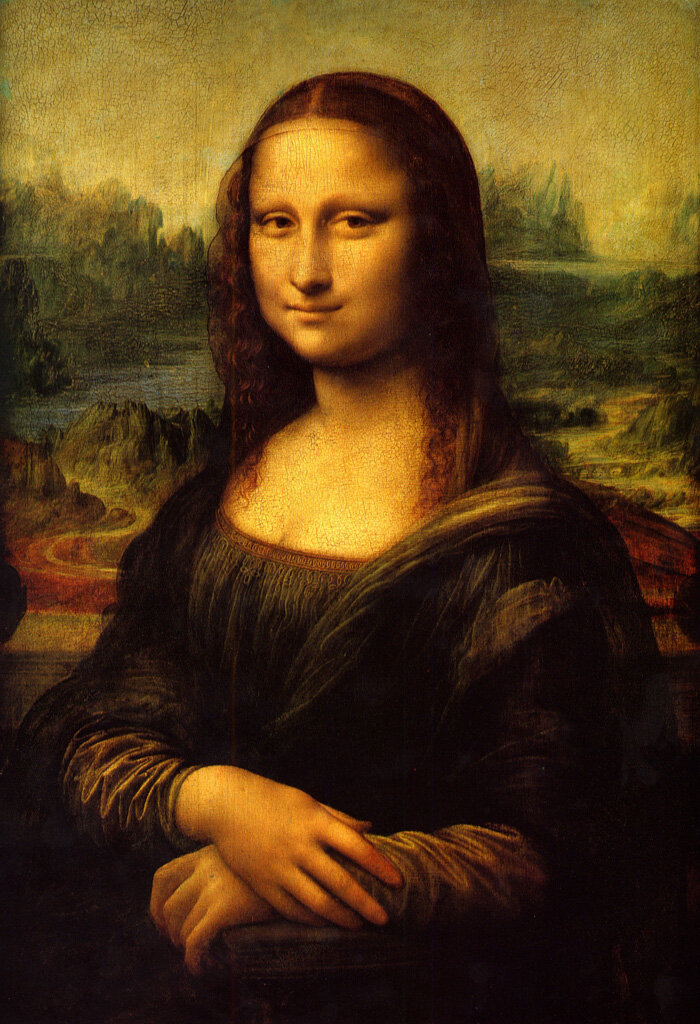A good portrait tries to reveal the “real” person inside the photo.
Read MoreMona Lisa
Breaking Ground
 OK, so in a minor way I am breaking ground in this blog because I am A)publishing a painting and B)I am posting someone else's work. Why, you ask?The answer is that I am assigning a "Copy Da Vinci" portrait assignment to my studio photography students and I thought this might also teach you a little about how you might improve your portraits.What Da Vinci did in this painting that helped shape the future of portraiture lies in part in the way the subject is posed. Generally, portraits were full-body and in profile mode before Da Vinci. What Da Vinci did is that he angled Mona Lisa and chose to show us a view of her that focused on her face. Imagine that!Additionally, Mono Lisa is looking right at us and smiling that famous smile. The angle of her shoulders and the gentle position of her hands make Mona Lisa seem relaxed and real. Of course we try to get the same effect in modern portraits.Da Vinci did do one thing that I would tell my photography students not to do and it has to do with the way the hands are posed. These days the general rule that that the back of the hand should never face the camera. What that does is that it presents an element in the photo (due to its size and brightness) that that competes with the face. And a portrait generally is all about the face.Da Vinci gets away with this hand showing because of the neat, nearly triangular shape that defines Mona. And, of course, the face is what clearly dominates this painting.Do you want to take good photos? How about finding some great works of art and copying them. When you start to copy, you start to see techniques and compositional elements that you may not have otherwise seen.
OK, so in a minor way I am breaking ground in this blog because I am A)publishing a painting and B)I am posting someone else's work. Why, you ask?The answer is that I am assigning a "Copy Da Vinci" portrait assignment to my studio photography students and I thought this might also teach you a little about how you might improve your portraits.What Da Vinci did in this painting that helped shape the future of portraiture lies in part in the way the subject is posed. Generally, portraits were full-body and in profile mode before Da Vinci. What Da Vinci did is that he angled Mona Lisa and chose to show us a view of her that focused on her face. Imagine that!Additionally, Mono Lisa is looking right at us and smiling that famous smile. The angle of her shoulders and the gentle position of her hands make Mona Lisa seem relaxed and real. Of course we try to get the same effect in modern portraits.Da Vinci did do one thing that I would tell my photography students not to do and it has to do with the way the hands are posed. These days the general rule that that the back of the hand should never face the camera. What that does is that it presents an element in the photo (due to its size and brightness) that that competes with the face. And a portrait generally is all about the face.Da Vinci gets away with this hand showing because of the neat, nearly triangular shape that defines Mona. And, of course, the face is what clearly dominates this painting.Do you want to take good photos? How about finding some great works of art and copying them. When you start to copy, you start to see techniques and compositional elements that you may not have otherwise seen.

